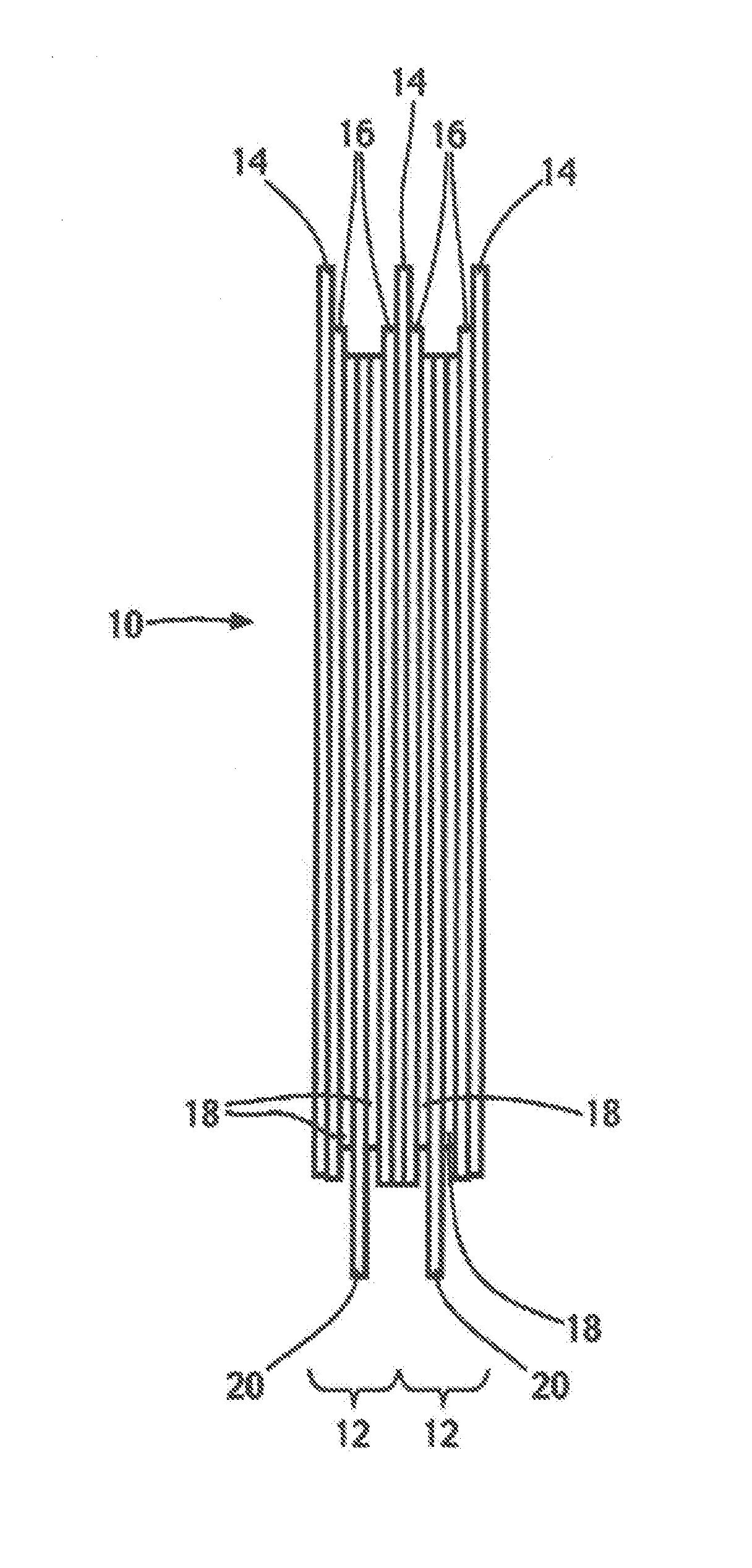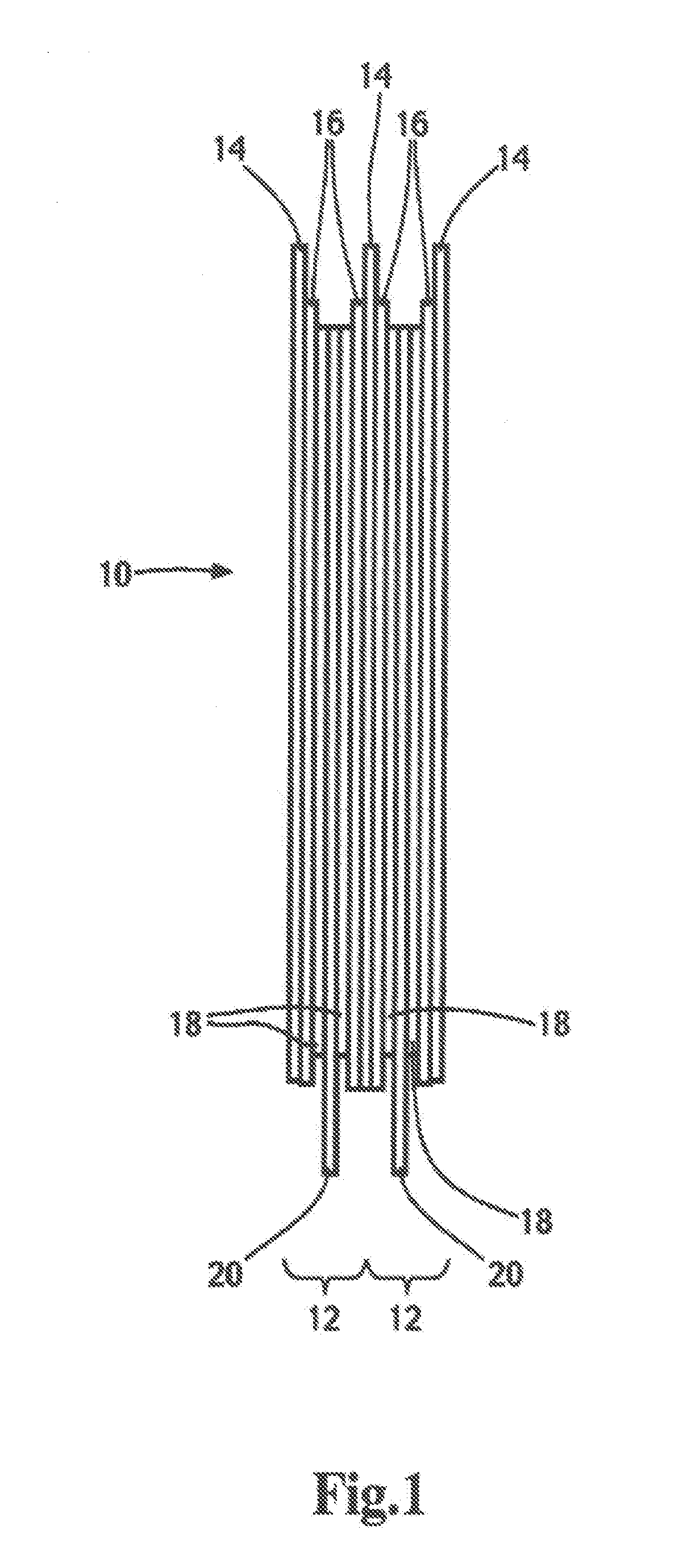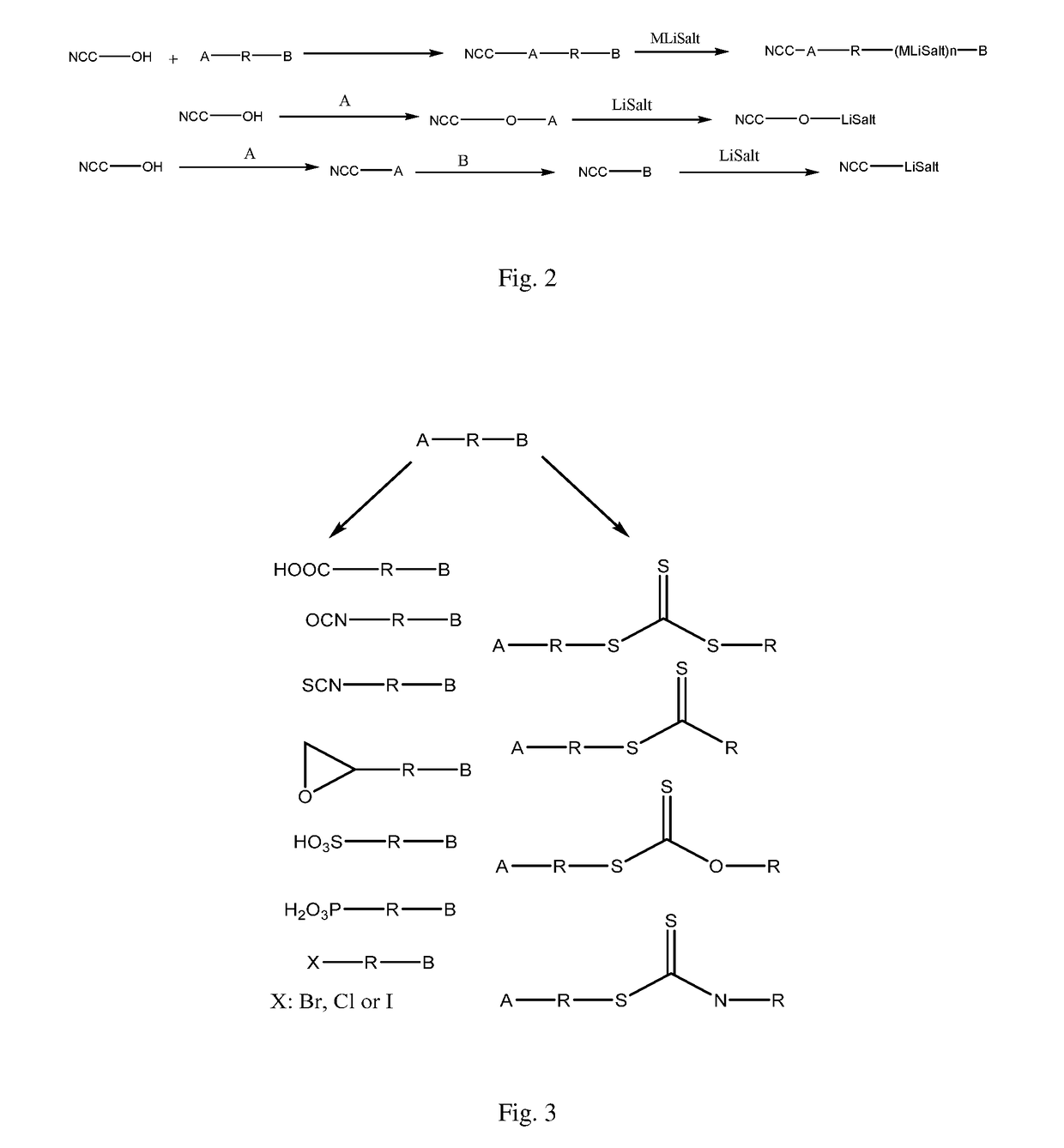Lithium salt grafted nanocrystalline cellulose for solid polymer electrolyte
a technology of nanocrystalline cellulose and lithium salt, which is applied in the direction of electrical equipment, climate sustainability, electrochemical generators, etc., can solve the problems of deteriorating the cycling characteristics of the battery, affecting the performance of the battery, so as to achieve the effect of increasing mechanical strength
- Summary
- Abstract
- Description
- Claims
- Application Information
AI Technical Summary
Benefits of technology
Problems solved by technology
Method used
Image
Examples
Embodiment Construction
)
[0019]FIG. 1 illustrates schematically a lithium metal polymer battery 10 having a plurality of electrochemical cells 12 each including an anode or negative electrode 14 made of a sheet of metallic lithium, a solid electrolyte 16 and a cathode or positive electrode film 18 layered onto a current collector 20. The solid electrolyte 16 typically includes a lithium salt to provide ionic conduction between the anode 14 and the cathode 18. The sheet of lithium metal typically has a thickness ranging from 20 microns to 100 microns; the solid electrolyte 16 has a thickness ranging from 5 microns to 50 microns, and the positive electrode film 18 typically has a thickness ranging from 20 microns to 100 microns.
[0020]The lithium salt may be selected from LiCF3SO3, LiB(C2O4)2, LiN(CF3SO2)2, LiC(CF3SO2)3, LiC(CH3)(CF3SO2)2, LiCH(CF3SO2)2, LiCH2(CF3SO2), LiC2F5SO3, LiN(C2F5SO2)2, LiN(CF3SO2), LiB(CF3SO2)2, LiPF6, LiSbF6, LiClO4, LiSCN, LiAsF6, LiBOB, LiBF4, and LiClO4.
[0021]The internal operati...
PUM
 Login to View More
Login to View More Abstract
Description
Claims
Application Information
 Login to View More
Login to View More - R&D
- Intellectual Property
- Life Sciences
- Materials
- Tech Scout
- Unparalleled Data Quality
- Higher Quality Content
- 60% Fewer Hallucinations
Browse by: Latest US Patents, China's latest patents, Technical Efficacy Thesaurus, Application Domain, Technology Topic, Popular Technical Reports.
© 2025 PatSnap. All rights reserved.Legal|Privacy policy|Modern Slavery Act Transparency Statement|Sitemap|About US| Contact US: help@patsnap.com



